Have you branded yourself as one without a green thumb ? Time to address these nine common mistakes houseplant gardeners probably make and restore your green thumb.
Despite all the hard work and time invested, you thought you had everything figured out, but your plants keep throwing curveballs at you. As a fellow plant parent, I can relate !
It could be frustrating when you’ve implemented suggestions from both the web and well-meaning friends, but you can’t notice any signs of improvements.
Perhaps it’s time to turn the table around by avoiding these nine common mistakes plant parents make for your plants to start flourishing like never before in record time.
Also, as we voyage into the green world, let this be your mantra, ”A journey of a thousand miles begins with a footstep.” In other words, this is not an overnight-success plant pill that will yield immediate results, but it will be rewarding if you are patient and consistent.
Nine common mistakes houseplant gardeners make
1. Unsuitable Potting Medium
They say, ”You cannot build a house on a broken foundation.”
Although this proverb virtually sounds blunt, it paints a clear picture of why choosing the appropriate medium pays off. A proper potting medium is a basis for growing healthy and flourishing plants. Luckily, garden centers have cut out the work for you by offering pre-made mediums ready for use.
You might be asking yourself how you can determine a suitable medium to buy for indoor plants ?
It’s simple: ”Know where your plant originates, so that you’ll be able to select the appropriate soil medium.”
The reason is that most indoor plants originate from different parts of the world, where soil types vary. For example, the potting medium mixture for Aloe Veras, Echeverias, or Peperomias will not be the same for Ferns, Ficuses, or, Dracaenas.
Bottom Line
If your plant requires a moisture-retaining medium, then provide it one.
Never repot moisture-loving plants in a well-draining medium or vice versa.
At the moment, a complete beginner’s guide to growing houseplants is a good aid.
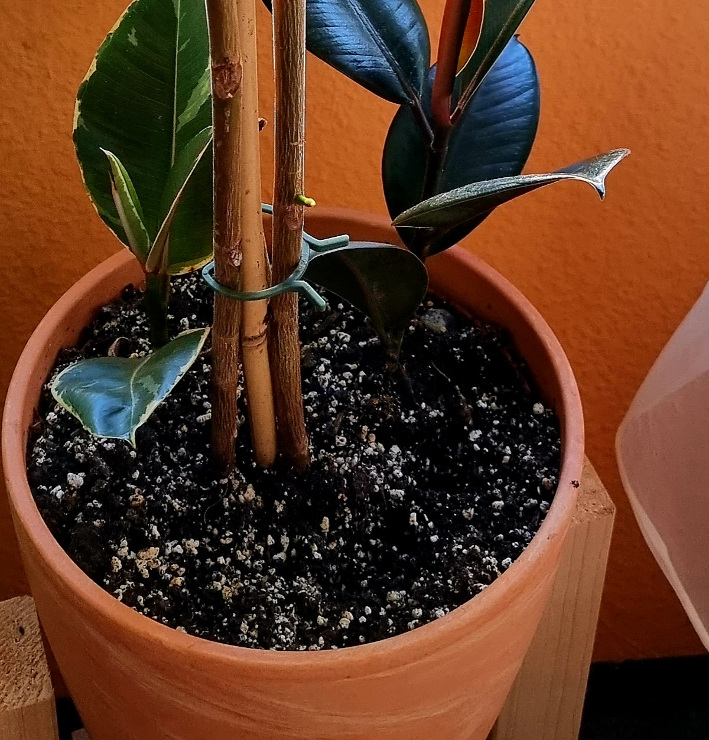
so that you’ll be able to select the appropriate soil medium.”
2. Overwatering
Watering is integral in your plant journey, but it’s also one of the most common mistakes new plant parents make, and I did too.
Allow me to share a little insight into my plant journey
At the beginning of my plant journey, I was puzzled as to why the mature leaves of my plants were turning yellow, and with some try and fail attempts, it appeared it was due to overwatering.
I was in a quandary and taunted because I always performed a finger check, and my finger always came out dry. Under normal circumstances, a dry finger means that it’s time to water, but I was approaching it the wrong way because my finger check was superficial, whereas the bottom of my medium was still wet. No wonder my Pothos and Succulents died.
Additional tips to help avoid overwatering:
- Create a watering schedule.
A watering schedule will help you keep track of the last day you watered your plants and determine how often you’ll need to quench their thirst.
More importantly, you’ll be able to implement this tip if you have plants of the same species.
- Top the medium of moisture-loving plants with floristic stones or your favorite pebbles to reduce the spread of Fungus Gnats.
How to create a watering schedule
Proceed by entering the last date you watered your plants on a calendar, and then start counting till the subsequent watering schedule. Remember to jot down every previous watering schedule so that you never over or underwater your plants.
- Soften your potting medium
Sometimes and across the years, you might have difficulties inserting your index finger into old potting mediums because they hardened. But you can soften them with the help of a blunt garden tool, but watch out not to damage the roots of the plants.
If your plant is root-bounded, this will be the perfect time to repot it.
- Use a watering can
A watering can will ensure an even spread and therefore a stable growth
Take away
Always soften hardened-out potting mediums to ensure finger permeability.
If the finger test method is not for you, consider investing in a moisture reading meter.
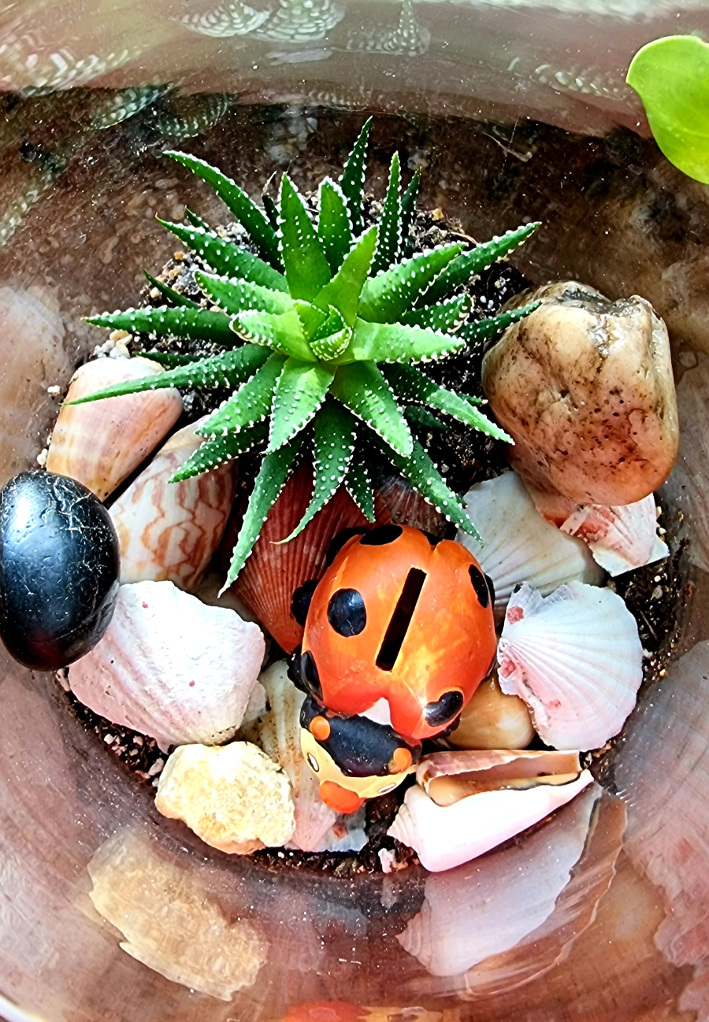
or your favorite pebbles to reduce the spread of Fungus Gnats.
3. Over Diversifying
What do I mean by over diversifying ?
In this case, it simply means you are buying species of plants with non-related needs.
This analogy will help you get the gist of it:
Peter has a big love for plants, so he gets himself a set of Ficus Benjamina, Philodendrons Micans, and Neon Pothos. He quickly masters and gets acquainted with their similar needs. He is also looking forward to expanding his repertoire, and the best option is to get other species of Ficus, Pothos, or Philodendron because he is familiar with their demands.
He knows that if he decides to buy another species (Fern, Erchiverias, Bromeliads, or Palms) with diverse needs, he must reinform himself about its care. And that will mean starting from scratch. However, Peter chooses to save himself time and trouble by buying another Philodendron, but this time, he gets a Philodendron Scandens.
Take away
From the above analogy, I believe you now get a clear picture of, ”over diversifying.” Just like Peter, you want to stick to a few species of plants with similar demands because by doing so, your plant routine will be efficient, both timewise and money-wise. Nobody wants to be a jack of all trades, a master of none.
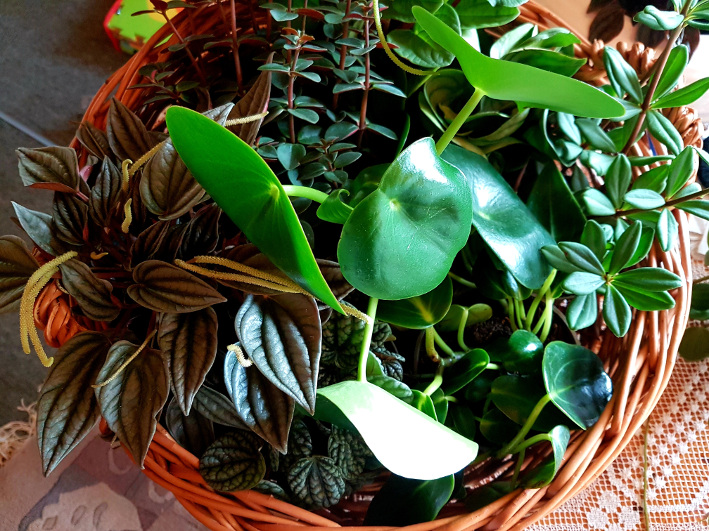
4. Hard Water (water containing limestone)
Water is life, but using hard water on your plants will damage their foliages and shorten the lifespan of your terracotta. Unfortunately, I was ignorant of this, and the browning tips of my Spider and Dracaena plants worsened with each passing day while my terracotta planters were crumbling, spreading residues everywhere.
A simple switch to rainwater works like magic, but not like Gandalf’s magic wand. 🙂 After four weeks, your plants should start flourishing as they ought to.
Bottom Line
Assuming you are incapable of collecting rainwater, then substitute it with filtered and distilled water, but they are both costly in the long run.
Perhaps, it’s time to invest in a mini rainwater tank.
5. Planters without drainages
The roots of plants will rot when they’re unable to use up the excess water accumulated in the medium because your planters and catchers lack drainage holes. Fortunately, if you solve the problem early, you could save the dying plant.
What should you do if you notice the roots of your plant rotting ?
The first thing to do is, take a deep breath, transfer your plant into a planter with drainage holes, and replace your medium if it’s soggy wet.
Please do not water immediately. It’s advisable to wait a day or two before watering.
What should you do if you stumble on a planter you like that doesn’t have drainages ?
- Use a befitting plastic inlet that has drainage holes.
- Take the planter to a potter to bore in holes.
- Fill the base with stones before adding your medium or plant.
Takeaway
You generally need to be more cautious when watering plants in drainage-free planters. Please use a meter or perform an index-finger check before proceeding to water plants in catchers or planters without drainages.
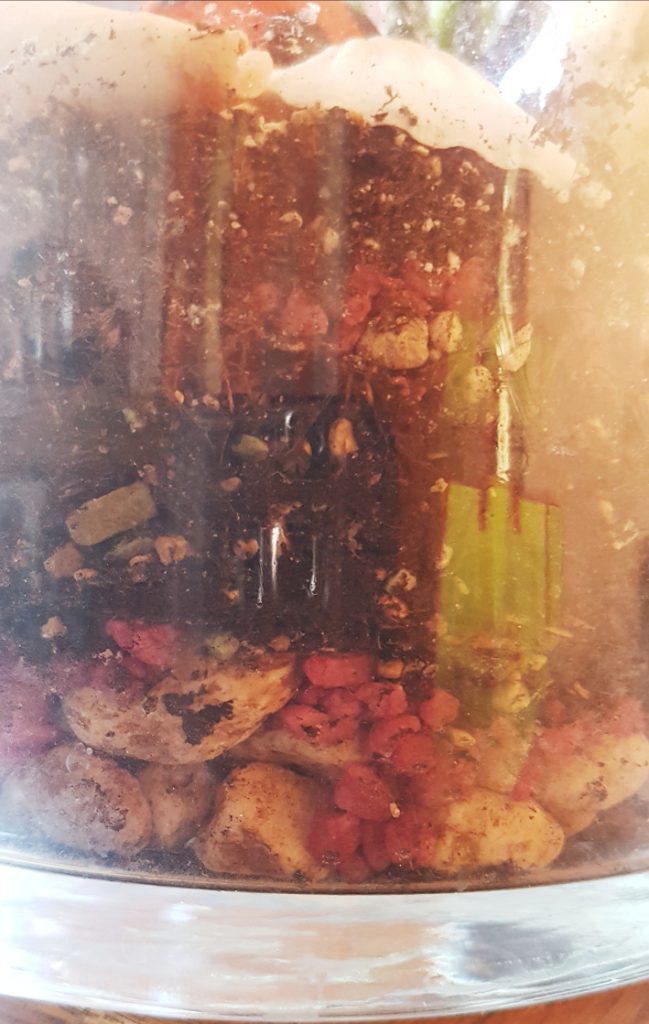
You can always fill the base of planters without drainages
with stones before adding your medium or plant
6. Frequent repositioning and movements of plants
It might come as a surprise to find out that frequent repositioning and movements of your plants within and out of your apartments could account for them dying. Just like you and I require time to adapt, so do plants. Plants that have acclimated (adapted) to the conditions of a specific spot within your home will face difficulties if you have to reposition them.
Let’s assume you have a beautiful Fiddle Fig growing on the eastern window, and you decide to move it to the south because it grew bigger.
The chances of adapting to the south-facing window will diminish because conditions in the south differ from those in the east-facing window.
Takeaway
Sometimes moving a plant is unavoidable, but to be on the safer side, always choose a similar position that simulates the previous.
Also, supplement with grow lights if need be.
7. Quarantine newly bought plants
An old wise saying goes, “Had I know, is always the last word.” Therefore, if you are serious about your plant journey and want to grow your collection, you must avoid this mistake. I don’t intend to scare you, but in worst-case scenarios, a single plaque plant could put you in a position where you have to start from scratch.
It’s an understatement to say that pests infestation is every gardener’s nightmare. However, you can avoid this by isolating newly bought plants for at least three weeks.
But, there are other things you must do too, which are:
- Mist newly bought plants with diluted neem oil or hydrogen peroxide.
- Use convex glasses to inspect every part of the plant. If you spot powdery mildew, blight, or fungus gnats, quarantine it for as long as it takes until your plant is pest-free.
- Shop healthy and pest-free plants.

thereby avoiding the spread of plant diseases
8. Inappropriate or no application of fertilizer
You may have noticed an accumulation of a whitish residue on the top layer of your potting mediums or the browning leaf tips and lower margins of your plants, and you’re wondering what it may be ? Powdered perlites or dust may be culprits, but deposits caused by over-fertilizing are most likely.
On a large scale, most qualitative potting mediums contain small amounts of fertilizer so that, after a repot, you don’t need to fertilize your plants immediately. From personal experience, a plant can go about three to six months without fertilizer after a fresh repot.
Some typical signs of fertilizer overdosage include:
- Leaf burns and whitish residue on your potting mix
- Rapid growth in the green leaves of flowering plants but less showy blooms
- Overdosage might kill the plant
Take away
In light of that, it’s better to see fertilizers as food spices because, if you are unmindful about the quantity and quality, they will ruin your recipe rather than enhance its taste. However, a beginner’s guide to fertilizing indoor plants entails all you’ll require to keep your plants alive.
9. Insufficient Care
How well are you caring for your plants ? Do you prefer to bathe them under a running shower, or would you rather mist their foliages and dry them up ?
Maybe you are still to establish a plant-care routine, but you should at least mist and clean their leaves monthly to keep those fuzzy monsters (plant pests) at bay or away.
The ideal way to do this is by misting the leaves of your plants with diluted neem oil or hydrogen peroxide and then drying them with a clean towel.
Another option is to shower your plants in the bathroom sink or outdoors, then mist them with diluted neem oil. I prefer this method because it’s time-saving and less hectic.
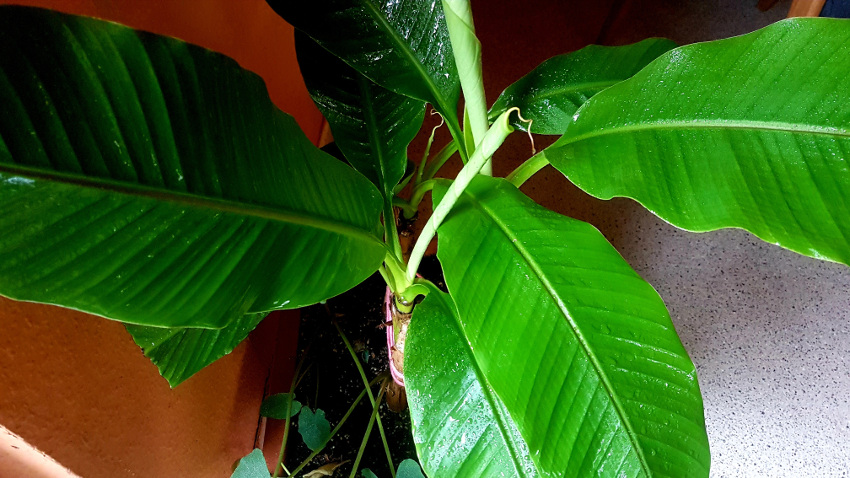
to keep them clean and pests-free
Bonus Point 🙂
Mindset (overthinking and not enjoying your plant journey)
Becoming a plant parent comes with unforeseen responsibilities and could sometimes get tedious, but the benefits of growing indoor greenery surpass these setbacks.
And if some of your plants die, do not be discouraged. I’ve lost a few plants in the past … and at first, I was crestfallen, but these trying moments, as you might call them, disclosed what I was doing wrong and ways to improve things. If you feel overwhelmed, it’s soothing to focus on something else, then return when you feel better.
How I handle such setbacks as a plant parent
Some months ago, I almost lost my favorite plant (Ficus Umbellata) to powdery mildew. Neem oil couldn’t perform its magic because the infestation had spread. Consumed by negative emotions, I was devastated as I watched my Ficus lose all of its leaves … but I wasn’t ready to give up without a fight. I said to myself, ”If this plant has to die, I’ll make it hard for it.”
The first thing I did was to take off its remaining leaves, pruned down the stem, and repotted it. After a few weeks, it sprouted its first leaf and continued to produce healthy leaves. So that was how I rescued my dying plant by transforming its stem into a bushy and healthy plant.
In a nutshell, I want you to constantly remember that there is fun in the journey if you believe in yourself and trust the process.
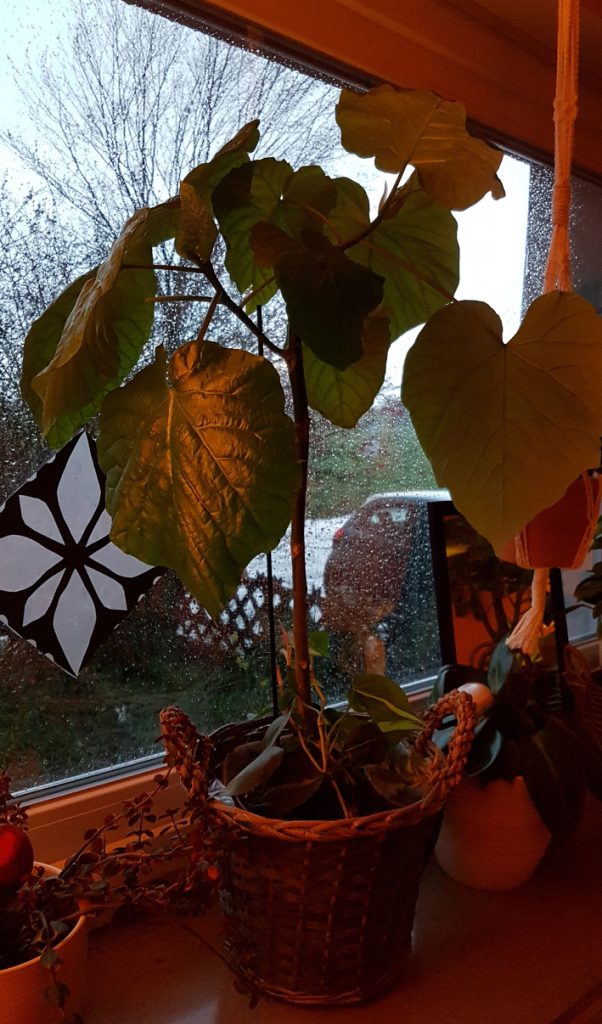
now flourishing like never
